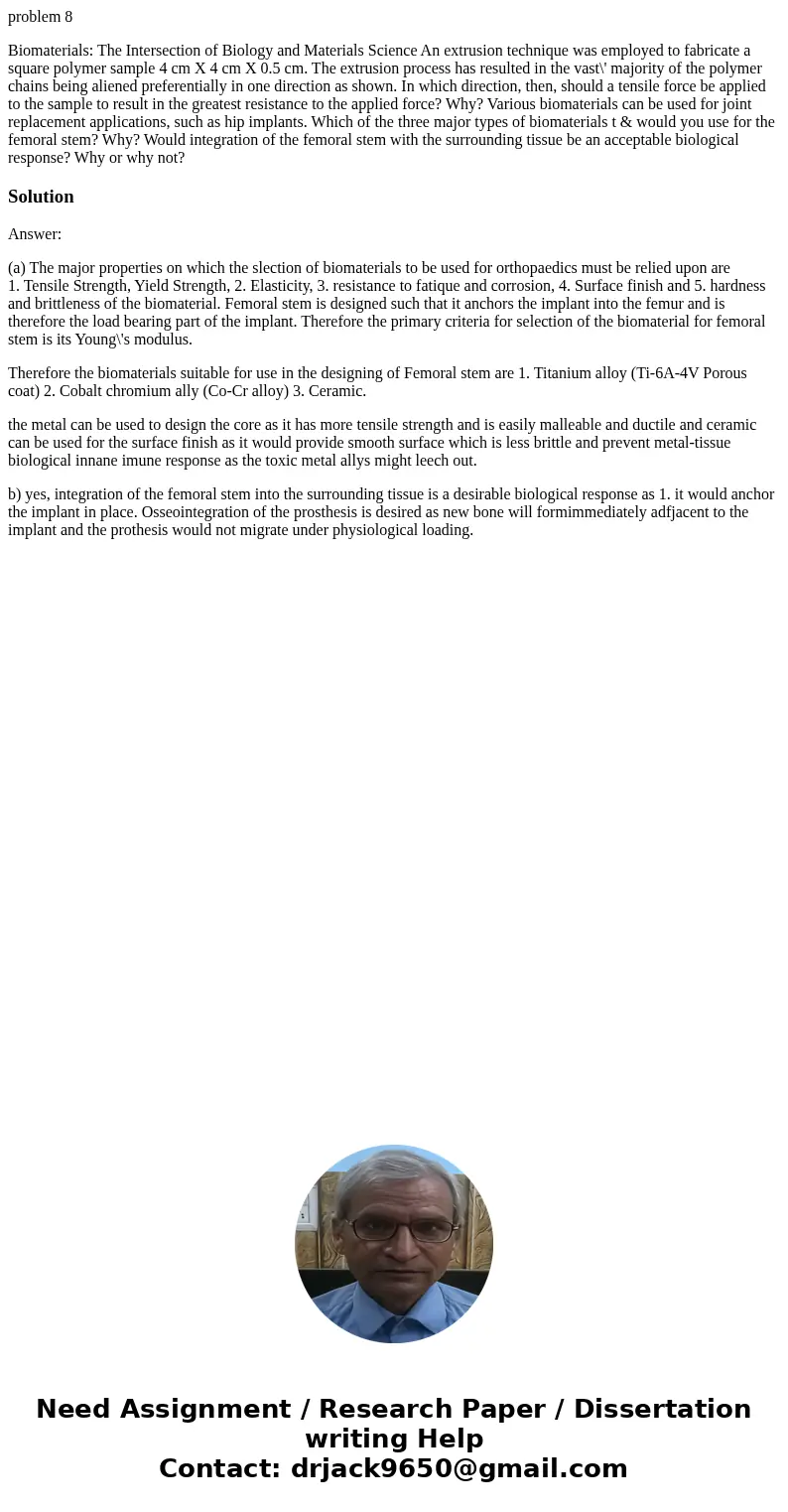problem 8 Biomaterials The Intersection of Biology and Mater
problem 8
Biomaterials: The Intersection of Biology and Materials Science An extrusion technique was employed to fabricate a square polymer sample 4 cm X 4 cm X 0.5 cm. The extrusion process has resulted in the vast\' majority of the polymer chains being aliened preferentially in one direction as shown. In which direction, then, should a tensile force be applied to the sample to result in the greatest resistance to the applied force? Why? Various biomaterials can be used for joint replacement applications, such as hip implants. Which of the three major types of biomaterials t & would you use for the femoral stem? Why? Would integration of the femoral stem with the surrounding tissue be an acceptable biological response? Why or why not?Solution
Answer:
(a) The major properties on which the slection of biomaterials to be used for orthopaedics must be relied upon are
1. Tensile Strength, Yield Strength, 2. Elasticity, 3. resistance to fatique and corrosion, 4. Surface finish and 5. hardness and brittleness of the biomaterial. Femoral stem is designed such that it anchors the implant into the femur and is therefore the load bearing part of the implant. Therefore the primary criteria for selection of the biomaterial for femoral stem is its Young\'s modulus.
Therefore the biomaterials suitable for use in the designing of Femoral stem are 1. Titanium alloy (Ti-6A-4V Porous coat) 2. Cobalt chromium ally (Co-Cr alloy) 3. Ceramic.
the metal can be used to design the core as it has more tensile strength and is easily malleable and ductile and ceramic can be used for the surface finish as it would provide smooth surface which is less brittle and prevent metal-tissue biological innane imune response as the toxic metal allys might leech out.
b) yes, integration of the femoral stem into the surrounding tissue is a desirable biological response as 1. it would anchor the implant in place. Osseointegration of the prosthesis is desired as new bone will formimmediately adfjacent to the implant and the prothesis would not migrate under physiological loading.

 Homework Sourse
Homework Sourse